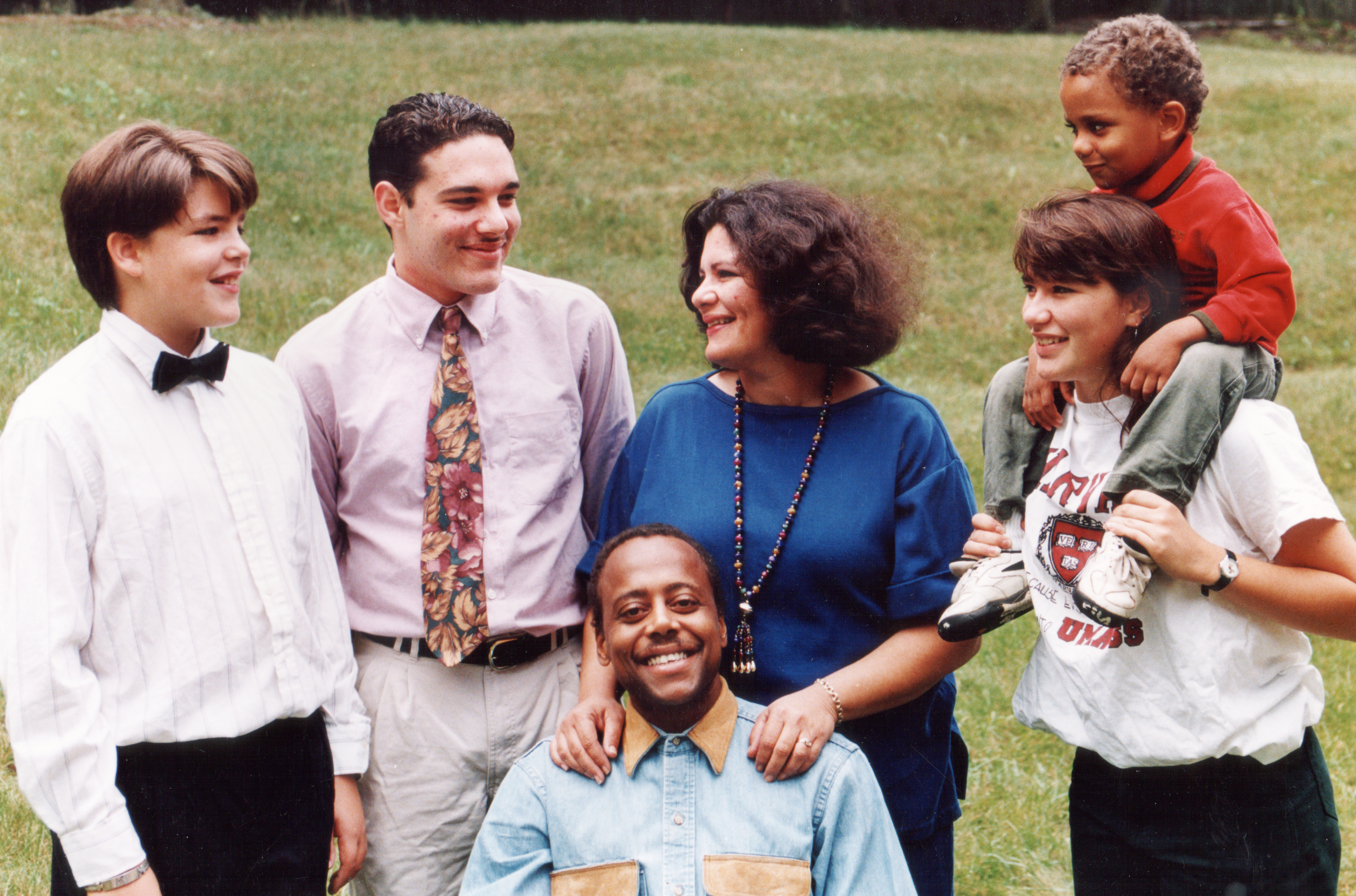“˜Of Many Colors: Portraits of Multiracial Families’ traveling exhibit bridges diverse backgrounds

“Of Many Colors: Portraits of Multiracial Families” is an exhibit featuring photographs and interviews with 20 families who have bridged the racial divide. The Abad family, above, is one of the families featured in the exhibit.
(Courtesy of Gigi Kaeser)
"Of Many Colors: Portraits of Multiracial Families"
Through Friday
Kerckhoff Art Gallery, FREE
By Lenika Cruz
May 22, 2011 11:28 p.m.
Starting this evening, UCLA will act as a home for 20 families, each with a story to tell about being multiracial Americans.
While these families will not be physically present, their photographs and interviews will be, as part of “Of Many Colors: Portraits of Multiracial Families,” a traveling exhibit that began circulating the country in the early ’90s.
The exhibit came to UCLA from the organization Family Diversity Projects as part of a collaboration between Multiracial Americans of Southern California and UCLA’s Mixed Student Union. An opening reception with a speech from Cultural Affairs Commissioner Kinnery Shah will take place in the Ackerman second floor lounge, after which the exhibit will move to the Kerckhoff Art Gallery until Friday.
The project is the work of Peggy Gillespie and Gigi Kaeser, co-founders of Family Diversity Projects. They interviewed and photographed more than 40 families living in and around Amherst, Mass., who identified as multiracial. One family consisted of a Puerto Rican mother, an African American father and their children, while another family featured Caucasian parents who had adopted children from Peru and China.
While UCLA may be culturally diverse, students have a tendency to divide themselves along racial lines, said Tara Sweatt, second-year communication studies student and co-president of MSU. She said this exhibit highlights the importance of students coming together, while reaching out to those who might feel left out because of their mixed identity.
“We’re trying to empower that identity so people don’t feel like they have to choose between one culture or the other,” Sweatt said.
Sweatt added that students often have misconceptions about the term “mixed,” which can refer to ethnic, racial or national identities. She cited a student who is ethnically Indian but lived in Kenya briefly, grew up in Canada and now lives in Los Angeles.
Farzana Nayani, president of MASC, said the exhibit will allow students to relate to images of families that stray from typical depictions in popular culture.
“I’m hoping it won’t necessarily show these students something new or surprising, but that it brings out the familiar,” Nayani said.
In some ways, the catalyst for the creation of the exhibit was a doll.
Gillespie’s adopted daughter was 3 years old when she received a brown-skinned doll for Christmas. She took it to school, where another little girl asked, “Why do you have that doll with the dirty skin?” Gillespie’s daughter never brought her doll to school again. Gillespie heard about the exchange from Kaeser, who was then her daughter’s teacher.
“It’s not like this child was racist or even knew what “˜African American’ meant,” Gillespie said. “She had just observed something about dark skin being unusual.”
Gillespie said she began to think of ways to educate people in her town about multiracial identity. Of the more than 40 families she and Kaeser worked with, only half will be shown at UCLA. When the exhibit debuted, Gillespie said some of the stories brought people to tears. The exhibit has traveled to hundreds of venues, most of them schools.
While the project took place in the early ’90s, Sweatt said she thinks core issues about mixed identity remain the same but that the exhibit provides a perspective for looking at how much has changed in the past 15 years.
Nayani said the purpose of this exhibit is not to portray multiracial people as outsiders, but to show that their experiences are like those of anyone else.
“Rhetoric in the past has made being multiracial seem full of obstacles, but everybody faces obstacles,” Nayani said.
According to Nayani, because college is a place where students explore their sense of self, positive support systems are key. She said that when she visited UCLA recently to give a talk about cultural diversity, a student came up to her, shocked after learning that she, like him, was of Pakistani-Filipino descent. They laughed together as they discovered how similar their upbringings were.
“When you’re growing up, and even going through adulthood, and you don’t meet someone exactly like you, you can feel empty. Connecting is important,” Nayani said. “With this exhibit, maybe more of those connections can happen.”

